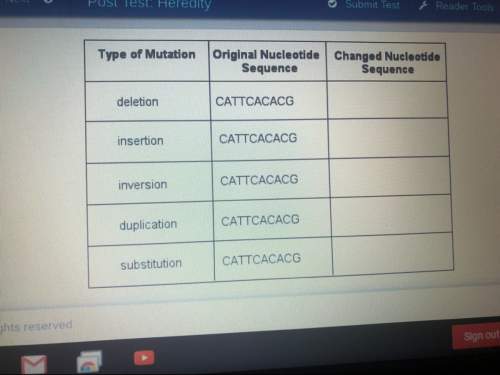
Biology, 04.07.2021 22:20 graygraygray6402
Name the process by which sugar moves into cell A. Name the process by which sugar moves into cell B.

Answers: 2


Other questions on the subject: Biology

Biology, 21.06.2019 16:00, stephanielynch
In a relatively small iguana population the allelic frequency is tracked for three generations. webbing is a recessive allele; no webbing is the dominant allele. during one very rainy spring and summer, a flood washes all the iguana without webbed feet out to sea. by the fall, and three generations later, you have the gene pool seen here.
Answers: 3

Biology, 22.06.2019 01:50, eaglesjohnson414
It is believed that europa, one of jupiter’s moons has an ocean beneath its surface. based on how earth’s oceans and atmosphere are believed to have formed, what can be said about europa’s supposed ocean? the arrival of in the early days of europa’s existence could have formed its ocean. it is likely that the water experienced , similar to earth. it is also possible that this water is retained beneath europa’s surface and in its atmosphere due to europa’s .
Answers: 1

Biology, 22.06.2019 09:00, veikkoaval
Dan made the table shown to describe two different relationships between animals. organism interactions relationship a relationship b one organism lives inside the organism it feeds off no organism is harmed which of the following statements is most likely correct?
Answers: 1

Biology, 22.06.2019 11:30, annsmith66
Ihave no idea how to solve these. plus there's another question that is 2) a 10 kilogram meteorite is collected in space and brought back to earth. it is composed of 1.25 kg of uranium-238 and 8.75 kg of lead-206. how many u-238 half lives have passed? what is the approximate age of the meteorite?
Answers: 1
You know the right answer?
Name the process by which sugar moves into cell A.
Name the process by which sugar moves into cell...
Questions in other subjects:


Business, 24.09.2020 03:01











